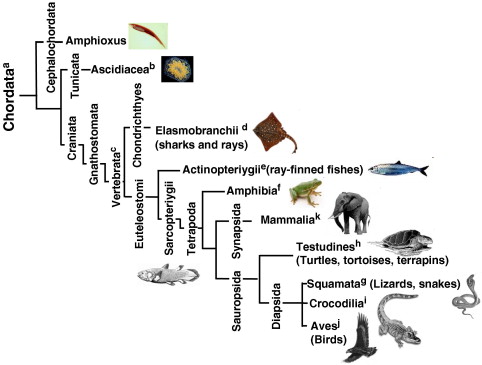Kingdom Animalia
Animalia kingdom includes all the animals. The name animalia is derived from Latin, anima = breath or soul.
In traditional two-kingdom systems, the multicellular animals were referred to broadly as Metazoa to distinguish them from one-celled animals, the Protozoa.
In this text book we have followed the five kingdom classification
system introduced by Robert Whittaker. In this system of classification
the traditional Protozoa belong to kingdom Protoctista. Kingdom Animalia
consists of all animals which are multicellular, diploid eukaryotic,
ingestive heterotrophs and develop from two dissimilar haploid gametes, a
large egg and a smaller sperm. In this chapter we will discuss various
groups and subgroups with details of the phyla in your curriculum.
Virtually all biologists agree that animals evolved from protoctists; however, which protoctists, when, and in what sort of environments, are questions that are still actively debated.
Development of Complexity in Animals
Although
multicellularity is found in all the kingdoms, fungi, plantae and
animalia but it has developed most impressively in animals- their cells
are joined by complex junctions, this ensures control of communications
and flow of materials between cells. The animals are a diverse group
distinct in their form. The smallest are microscopic, which are smaller
than many protoctists and the largest today are whales-sea mammals,
included in phylum Chordata.
The simplest of the animals belong to subkingdom Parazoa
(phylum Porifera). These animals lack tissues organized into organs and
have indeterminate shape, and are asymmetrical. The sub kingdom Eumetazoa
includes animals of other phyla. These animasl have tissues organized
into organs and organ systems. These include radially symmetrical
animals (grade Radiata) and bilaterally symmetrical animals (grade Bilateria). Grade Radiata includes simplest of the Eumetazoa (phylum Cnidaria).
They are much simpler in their organization compared to the animals
belonging to other Eumetazoa.most of the phyla which belong to kingdom
Animalia (about 29) belong to subkingdom Eumetazoa. These animals have
been divided into three groups on the basis of presence, absence or type
of body cavity found in them. The animals which do not have a body
cavity have been grouped under Acoelomata. The animals which have a fase coelom, the pseudocoele, have been grouped under Pseudocoelomata. The animals which have a true coelom have been grouped under Coelomata.
Grade Radiata
In
this group animals with radial symmetry have been included. All the
animals which are included here are also diploblastic. This is a
condition or organization in which the parts of the body are arranged
around a central axis in such a way that any plane passing through the
central axis divides the animal in halves that are almost mirror image
of each other e.g. as in cnidaria (coelenterate). The cylindrical body
of a sea-anemone can be cut in two equal halves vertically in any plane.


0 Comments:
Post a Comment
Subscribe to Post Comments [Atom]
<< Home